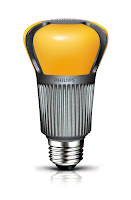IES Progress Report Committee
 Thursday, June 14, 2012 at 9:36AM
Thursday, June 14, 2012 at 9:36AM  I have been fortunate enough to serve as a member on the IES Progress Report Committee for the past eight years. Our mission is to, “keep in touch with developments in the art and science of lighting throughout the world, and prepare a yearly review of achievements for the Illuminating Engineering Society”.
I have been fortunate enough to serve as a member on the IES Progress Report Committee for the past eight years. Our mission is to, “keep in touch with developments in the art and science of lighting throughout the world, and prepare a yearly review of achievements for the Illuminating Engineering Society”.
It’s an extremely talented group of about 30 dedicated individuals from across the lighting industry. Our members are Manufacturers (lamps, lighting controls, luminaires), Educators, Utility Folks, and Lighting Designers. I feel privileged to be part of the committee with such an extensive knowledge base, we have members who have served on this sole committee for over 30 years. It is our responsibility each year, to review submitted lighting products, lighting publications and research and then determine what is considered progress in the industry that is noteworthy and should be presented to the Society at the national conference and then published in our monthly trade journal.
Last year we received 261 submissions, 156 were accepted. Our review period for submissions is an intense 2-1/2 days. It seems like a short time for a review of so many items, but it certainly feels like a really long day when you have been trapped in a room for 10 hours straight looking at lights. But my colleagues make it all worthwhile. To hear fair and direct commentary on a products merits (or failings) from such a group of experts in invaluable.
 Along with their wisdom comes a very dry sense of humor that helps make the day move forward. And I confess, I have been known to slip in “made-up and fake products”. In 2009, my “fake” product was accepted into the report and read aloud at the conference. It was for the application of a new NET ZERO lighting control system. All power in the building was organic and generated by the “gregarious activity of Sea Monkeys”.
Along with their wisdom comes a very dry sense of humor that helps make the day move forward. And I confess, I have been known to slip in “made-up and fake products”. In 2009, my “fake” product was accepted into the report and read aloud at the conference. It was for the application of a new NET ZERO lighting control system. All power in the building was organic and generated by the “gregarious activity of Sea Monkeys”.
It was claimed, they could generate up to 1.21 gigawatts of electricity daily. The only other known organic source of that magnitude is a bolt of lightning. The control system transferred the power through-out the building thru the use of a Flux Capacitor.

The fake submission was accepted by 100% of the members and kept us all in good spirits. And since submissions are currently open, I guess I need to start thinking of a small distraction that can help us through the next arduous review session…
We are currently accepting submissions for the 2012 report. You can check out the 2011 report on the IES website http://www.ies.org/progress/ Submissions close on August 17th.
 IES,
IES,  Progress Report,
Progress Report,  lighting in
lighting in  lighting,
lighting,  organizations
organizations 



